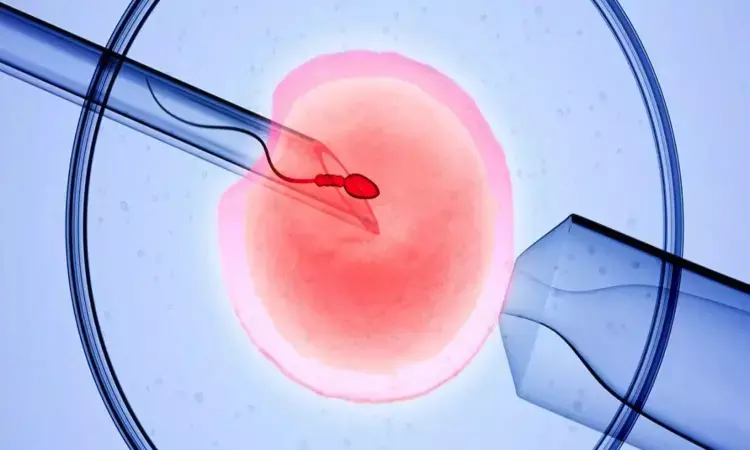- Home
- Medical news & Guidelines
- Anesthesiology
- Cardiology and CTVS
- Critical Care
- Dentistry
- Dermatology
- Diabetes and Endocrinology
- ENT
- Gastroenterology
- Medicine
- Nephrology
- Neurology
- Obstretics-Gynaecology
- Oncology
- Ophthalmology
- Orthopaedics
- Pediatrics-Neonatology
- Psychiatry
- Pulmonology
- Radiology
- Surgery
- Urology
- Laboratory Medicine
- Diet
- Nursing
- Paramedical
- Physiotherapy
- Health news
- Fact Check
- Bone Health Fact Check
- Brain Health Fact Check
- Cancer Related Fact Check
- Child Care Fact Check
- Dental and oral health fact check
- Diabetes and metabolic health fact check
- Diet and Nutrition Fact Check
- Eye and ENT Care Fact Check
- Fitness fact check
- Gut health fact check
- Heart health fact check
- Kidney health fact check
- Medical education fact check
- Men's health fact check
- Respiratory fact check
- Skin and hair care fact check
- Vaccine and Immunization fact check
- Women's health fact check
- AYUSH
- State News
- Andaman and Nicobar Islands
- Andhra Pradesh
- Arunachal Pradesh
- Assam
- Bihar
- Chandigarh
- Chattisgarh
- Dadra and Nagar Haveli
- Daman and Diu
- Delhi
- Goa
- Gujarat
- Haryana
- Himachal Pradesh
- Jammu & Kashmir
- Jharkhand
- Karnataka
- Kerala
- Ladakh
- Lakshadweep
- Madhya Pradesh
- Maharashtra
- Manipur
- Meghalaya
- Mizoram
- Nagaland
- Odisha
- Puducherry
- Punjab
- Rajasthan
- Sikkim
- Tamil Nadu
- Telangana
- Tripura
- Uttar Pradesh
- Uttrakhand
- West Bengal
- Medical Education
- Industry
Study compares Pregnancy outcomes of fresh with cryopreserved-thawed embryo transfer

The use of cryopreserved donor oocytes in the United States has been steadily increasing. One question that remains unanswered about cryopreserved donor oocytes is whether there is a difference in pregnancy outcomes among patients who use a fresh embryo transfer (ET) compared with patients who cryopreserve the resulting embryo, followed later by a frozen ET. Given the widespread use of frozen donor oocytes, determining whether an association exists between either fresh or cryopreserved-thawed ET and the resulting pregnancy outcome is imperative. Therefore, this study by Lauren Barrison et al evaluated pregnancy outcomes among frozen donor oocyte cycles, comparing fresh ET with cryopreserved-thawed ET.
This retrospective cohort study examined donor oocyte thaw cycles using cryopreserved oocytes from Donor Egg Bank USA between 2016 and 2021. The study received institutional review board approval. Donor Egg Bank’s standardized protocols were followed for donor screening, donor stimulation, oocyte retrieval, oocyte vitrification, and oocyte shipping. Authors included donor cycles with oocyte lots that were received by 2 different recipients, with one undergoing fresh blastocyst transfer and one undergoing cryopreservedthawed blastocyst transfer. The primary outcome was an ongoing pregnancy, defined as a viable intrauterine pregnancy at the time of referral to an obstetrician at approximately 8 weeks of gestation. Secondary outcomes included additional pregnancy and embryonic development outcomes
A total of 1,210 recipient cycles of cryopreserved donor oocytes were included (605 underwent fresh ET, 605 underwent cryopreserved-thawed ET). The distribution for the year of oocyte thawing between the fresh and frozen ET groups was distributed similarly for both groups. The 2 groups were identical in regard to donor characteristics given the sibling oocyte study design (mean age 25.5 years, mean body mass index 23.0 kg/m2 , mean antimullerian hormone level 5.9 ng/mL, mean antral follicle count 28.3). The recipients in the 2 groups were similar in age (mean age: 42.2 vs. 42.0 years). Surgically retrieved sperm was used by 2.8% of the fresh ET group and 1.3% of the cryopreserved-thawed ET group.
There was no statistically significant difference in the ongoing pregnancy rate between the fresh vs. cryopreserved-thawed ET groups (51.2% vs. 49.6%; relative risk 0.97 [95% confidence interval, 0.83–1.14]). Secondary pregnancy outcomes were also similar between the 2 groups.
Prior studies with mixed findings focused on comparing the use of fresh vs. cryopreserved donor oocytes in fresh ET cycles or comparing fresh vs. cryopreserved-thawed ET using fresh donor oocytes. Many patients use cryopreserved donor oocytes because of their greater availability and access, shorter time to treatment, and greater ease of cycle synchronization.
This study specifically addressed cryopreserved donor oocytes and the potential impact of a second ‘‘freeze-thaw’’ on these gametes.
The retrospective study design restricts analysis to data previously collected; the Donor Egg Bank’s data set did not include additional recipient demographic information or transfer cycle characteristics, which limits the ability to account for these potential confounders and the generalizability of the findings. In conclusion, among patients using frozen donor oocytes, pregnancy outcomes per donor oocyte thaw cycle were comparable between recipients undergoing fresh ET compared with recipients using sibling oocytes undergoing cryopreserved-thawed ET. On the basis of these findings, patients using cryopreserved donor oocytes should not be deterred from subsequent embryo cryopreservation.
Source: Lauren Barrison, M.D.a Melissa Stratton, B.A.b Wayne Caswell, M.S; VOL. 122 NO. 3 /FertilitySterilty
https://doi.org/10.1016/j.fertnstert.2024.04.027
MBBS, MD Obstetrics and Gynecology
Dr Nirali Kapoor has completed her MBBS from GMC Jamnagar and MD Obstetrics and Gynecology from AIIMS Rishikesh. She underwent training in trauma/emergency medicine non academic residency in AIIMS Delhi for an year after her MBBS. Post her MD, she has joined in a Multispeciality hospital in Amritsar. She is actively involved in cases concerning fetal medicine, infertility and minimal invasive procedures as well as research activities involved around the fields of interest.
Dr Kamal Kant Kohli-MBBS, DTCD- a chest specialist with more than 30 years of practice and a flair for writing clinical articles, Dr Kamal Kant Kohli joined Medical Dialogues as a Chief Editor of Medical News. Besides writing articles, as an editor, he proofreads and verifies all the medical content published on Medical Dialogues including those coming from journals, studies,medical conferences,guidelines etc. Email: drkohli@medicaldialogues.in. Contact no. 011-43720751


